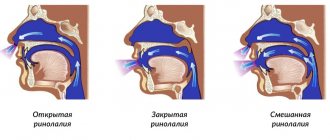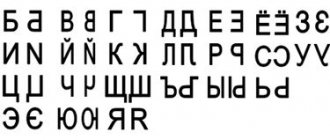Dysarthria is a speech pathology in which incorrect (distorted or difficult) pronunciation of sounds, words, phrases, and syllables is observed. This speech disorder is caused by brain damage or various disorders of the articulatory apparatus (which is why you can often find the expression “articulatory dysarthria”).
This disorder can be observed with normal intelligence, against the background of mental retardation and with mental retardation - oligophrenia, then it has specific features. For dysarthria, specialists often use speech therapy massage.
The following symptoms of dysarthria can be distinguished:
- disorders associated with speech motor skills;
- violation of sound pronunciation;
- improper speech breathing;
- voice disorders;
- violations of the prosodic side of speech.
Organic damage to the central nervous system in this case occurs in the prenatal, birth or early stages of a child’s development (usually up to 2 years). That is why, as a rule, experts talk about the development of dysarthria in preschool children.
In addition, in early childhood, damage to the central nervous system and speech dysarthria in a child can develop as a result of the following diseases:
- neuroinfections (miningitis, encephalitis);
- purulent otitis media;
- hydrocephalus;
- traumatic brain injuries;
- severe intoxication.
Forms of dysarthria are classified based on the identification of different locations of brain damage. When correcting dysarthria, the First Children's Medical Center uses various methods of speech therapy.
The degree of impairment of speech or articulatory motor skills may vary. Conventionally, there are three degrees of dysarthria: mild, moderate, severe.
1. A mild degree of dysarthria (erased dysarthria) is characterized by defects in sound pronunciation, as well as the absence of gross violations of the motor skills of the articulatory apparatus.
2. Children with moderate speech dysarthria make up the largest group. They are characterized by amicity: lack of movement of the facial muscles.
3. Severe degree of dysarthria (anarthria) - deep muscle damage and complete inactivity of the speech apparatus.
Diagnosis of dysarthria should include a thorough examination of speech motor skills, sound pronunciation and general speech development.
Symptoms of the disease
The symptoms of pseudobulbar dysarthria depend on the severity, of which there are only four:
- 1st degree – there are no pronounced speech defects, which can be identified by a speech therapist.
- 2nd degree – the child’s speech is understandable, but some speech disorders are noticeable.
- 3rd degree – speech is incomprehensible to people around, including loved ones.
- 4th degree – the patient’s speech is not completely understandable.
The general symptoms of this form of dysarthria have some components:
- distorted syllables, sounds;
- hypertonicity of the facial muscles;
- limited mobility of the tongue and lips;
- increased salivation;
- weak quiet voice;
- arrhythmia of breathing.
A diagnosis of “pseudobulbar dysarthria” can only be made by a speech therapist or neurologist based on certain research results.
Causes of speech impairment
Speech disorders occur when the pathways between the bulbar nerves and the cerebral cortex are damaged. This can occur for a number of reasons:
- Cerebrovascular disorders. These are strokes, cerebral ischemia, cerebral atherosclerosis. These diseases often lead to the development of pseudobulbar disorders, leading to disorders of the speech apparatus.
- Head injury. This reason is most common for children over one year of age.
- Perinatal pathology. This group includes fetal hypoxia, intrauterine infections, and birth trauma. As a result of these processes, functional corticobulbar disorders occur.
- Neuroinfections.
For all these reasons, with pseudobulbar dysarthria, the structure of the speech defect suffers and is disrupted.
Forms of pseudobulbar dysarthria
There are three forms of this type of dysarthria:
- spastic (spasmodic);
- paretic;
- mixed (that is, spastic-paratic).
Each of these forms has its own symptoms and treatment features.
Spastic form of pseudobulbar dysarthria
This form of pseudobulbar dysarthria is characterized by tension of the respiratory muscles or hyperkinesia of the larynx, spastic paresis of the lingual muscle, tension of the labial muscles and impaired tone of the palate.
Such manifestations make speech more monotonous, with a nasal tone. It is difficult for a child to maintain articulatory postures, there are difficulties in switching them, and the breathing process may take a long time, which leads to problems in voice formation (articulation). With pseudobulbar dysarthria, the following characteristic phenomena are observed:
- silent articulation;
- there is no prolonged rest of the speech muscles;
- spasms of the labial muscles;
- tension when smiling;
- limited tongue movements;
- disturbances in sucking and swallowing movements are observed;
Often in children with this disorder, the first cry is absent, and breathing is pronouncedly weak and arrhythmic, there is a weak short exhalation, and speech occurs while inhaling. This species is also characterized by the presence of speech phonations, a weak, quiet voice, the rate of speech is fast, but its rhythm is not maintained. In other words, someone who has a spastic form of pseudobulbar dysarthria speaks from spasm to spasm, which leads to the use of short phrases with poor intelligibility, depending on the strength of the voice. At the same time, the meaning of what was said does not suffer.
Paretic form of pseudobulbar dysarthria
This form is observed with hypotonia of the speech and skeletal muscles. The child has pareticity of the tongue, lips, and palate. There is difficulty in switching articulatory postures, asynchrony in breathing and articulatory movements. Often such a child may have increased salivation (salivation).
The inhalation during conversation is short and inadequate, and the exhalation is also weak. The voice itself is loud, ringing, but quickly fading. Speech in this case has a nasal pronunciation, weak and quiet. Some isolated sounds are completely preserved, but in the speech stream they are blurred. Eating is at a disturbed pace and there are difficulties in coordinating chewing movements.
Mixed form
This form is the most common. In the scientific literature it is called spastic-paretic syndrome. With it, there is hypertonicity of one muscle group, for example, the muscles of the lips and cheeks, while the tongue has reduced tone.
Forecast and prevention of dysarthria
Only early, systematic speech therapy work to correct dysarthria can give positive results. A major role in the success of correctional pedagogical intervention is played by the therapy of the underlying disease, the diligence of the dysarthric patient himself and his close circle.
Under these conditions, one can count on almost complete normalization of speech function in the case of erased dysarthria. Having mastered the skills of correct speech, such children can successfully study in a comprehensive school, and receive the necessary speech therapy help in clinics or at school speech centers.
In severe forms of dysarthria, only improvement in speech function is possible. The continuity of various types of speech therapy institutions is important for the socialization and education of children with dysarthria: kindergartens and schools for children with severe speech disorders, speech departments of psychoneurological hospitals; friendly work of a speech therapist, neurologist, psychoneurologist, massage therapist, and physical therapy specialist.
Medical and pedagogical work to prevent dysarthria in children with perinatal brain damage should begin from the first months of life. Prevention of dysarthria in early childhood and adulthood involves preventing neuroinfections, brain injuries, and toxic effects.
Diagnosis of pseudobulbar dysarthria
The patient should be managed by a speech therapist, neurologist and other specialized medical specialists. For accurate diagnosis, the following research methods are used:
- speech therapy speech study;
- electroencephalography;
- electromyography;
- MRI of the head.
In some cases, a study of cerebrospinal fluid by lumbar puncture may be prescribed. This analysis identifies neuroinfectious causes. A neurologist should participate in the diagnosis. They must undergo an examination, special tests, and a study of the child’s motor skills and facial expressions. These methods make it possible to assess the degree, type, and causes of the disorder, and also, based on the data obtained, formulate an effective treatment program.
Treatment of pseudobulbar dysarthria
Corrective work is based on speech therapy sessions and exercises. They are carried out under the supervision of a specialist and are aimed at developing fine and speech motor skills. In some cases, drug treatment may be used. General correction of this form of dysarthria consists of:
- physiotherapy;
- therapeutic physical culture;
- taking baths;
- reflexology and others.
Nootropics are used for drug treatment. It is important to understand that early diagnosis is extremely important in this matter. All therapeutic measures of the correction program should be prescribed exclusively by a specialist; self-medication can be dangerous.
For correction, etiopathogenetic treatment is used. It eliminates the etiological factors of speech development. If dysarthria is caused by neuroinfections, it is necessary to prescribe antiviral and antibacterial therapy. Treatment methods depend on the causes of this speech disorder.
An important part is special speech therapy classes. For hypertonicity, speech therapy massage, breathing exercises and other exercises can be used. This part of the correction is aimed at obtaining fluency of speech, its emotionality and expressiveness.
Erased dysarthria in children
Erased dysarthria, as mentioned earlier, is the first degree of severity of dysarthria. With this disorder, mild disorders of the phonetic and prosodic (voice strength, tempo, rhythm, intonation) components of speech are observed. These disorders are caused by insufficient supply (innervation) of the articulatory organs with nerve cells.
The following characteristics of this speech defect are noted:
- unclear articulation;
- distortion of sounds of several phonetic groups;
- complexity of automation;
- unimpressive speech.
Correction of erased speech dysarthria involves the use of articulation, breathing and finger exercises, as well as speech therapy massage. Particular emphasis is placed on automating evoked sounds and normalizing prosody. Classes with a speech therapist are carried out in parallel with treatment by a neurologist. When treating, it is necessary to take into account the characteristics of dysarthria - the severity of the pathology, its type, as well as the level of speech development of the child.
Difference between bulbar dysarthria and pseudobulbar dysarthria table
The main differences between bulbar dysarthria and pseudobulbar dysarthria are as follows:
- They differ in the characteristics of paralysis of the speech muscles. With the bulbar type, peripheral paresis is observed, and with pseudobulbar paresis it is central.
- With bulbar, voluntary and involuntary movements of speech motor skills are disrupted. With pseudobulbar, only voluntary sounds are affected.
- With bulbar dysarthria, diffuse articulatory motor skills are affected, and in the second type, a selective nature of the violation of articulatory movements is observed.
There are also differences in sound pronunciation. The bulbar type makes the pronunciation of vowels neutral.
Article:
Dysarthria is a violation of the pronunciation aspect of speech caused by insufficient innervation of the speech apparatus.
The leading defect in dysarthria is a violation of the sound pronunciation and prosodic aspects of speech associated with organic damage to the central and peripheral nervous systems.
According to clinical and psychological characteristics, children with dysarthria can be divided into several groups depending on their general psychophysical development:
- dysarthria in children with normal psychophysical development
- dysarthria in children with cerebral palsy
- dysarthria in children with mental retardation
- dysarthria in children with hydrocephalus
- dysarthria in children with mental retardation
- dysarthria in children with minimal brain dysfunction (MCD). This form of dysarthria occurs most often among children of special preschool and school institutions. Along with the insufficiency of the sound-pronunciation aspect of speech, they usually have mild disturbances in attention, memory, intellectual activity, emotional-volitional sphere, mild motor disorders and delayed formation of a number of higher cortical functions.
Motor disorders usually appear at later stages of the formation of motor functions, especially such as the development of the ability to sit up independently, crawl, walk, grasp objects with fingertips and manipulate them.
Emotional-volitional disorders manifest themselves in the form of increased emotional excitability and exhaustion of the nervous system. In the first year of life, such children are restless, cry a lot, and require constant attention. They are usually weather dependent. At preschool and school age, they are restless motorly, prone to irritability, mood swings, fussiness, and often show rudeness and disobedience. Motor restlessness increases with fatigue.
Despite the fact that children do not have pronounced paralysis and paresis, their motor skills are characterized by general clumsiness, lack of coordination, they are awkward in self-care skills, lag behind their peers in dexterity and accuracy of movements, they are delayed in developing the readiness of their hand for writing, so it takes a long time There is no interest in drawing and other types of manual activities; poor handwriting is noted at school age. Violations of intellectual activity are expressed in the form of low mental performance, memory impairment, and attention. Many children are characterized by a delayed formation of spatio-temporal concepts, optical-spatial gnosis, phonemic analysis, and constructive praxis.
Symptoms of dysarthria:
With dysarthria at different levels, the transmission of impulses from the cortex to the nuclei of the cranial nerves is disrupted. In this regard, the muscles (respiratory, vocal, articulatory) do not receive nerve impulses, the function of the main cranial nerves directly related to speech (trigeminal, facial, sublingual, glossopharyngeal, vagus nerves) is disrupted.
- The trigeminal nerve innervates the muscles of mastication and the lower part of the face. If affected, there are difficulties in opening and closing the mouth, chewing, swallowing, and moving the lower jaw.
- The facial nerve innervates the facial muscles. In case of defeat, the face is amicable, mask-like, it is difficult to close your eyes, frown your eyebrows, and puff out your cheeks.
- The hypoglossal nerve innervates the muscles of the two anterior thirds of the tongue. If affected, the mobility of the tongue is limited, and difficulties arise in holding the tongue in a given position.
- The glossopharyngeal nerve innervates the posterior third of the tongue, the muscles of the pharynx and the soft palate. If affected, a nasal tone of voice appears, a decrease in the pharyngeal reflex is observed, and the small tongue deviates to the side.
- The vagus nerve innervates the muscles of the soft palate, pharynx, larynx, vocal folds, and respiratory muscles. The defeat leads to inadequate functioning of the muscles of the larynx and pharynx, and impaired breathing function.
In the early period of child development, these disorders manifest themselves as follows :
- Infancy: due to pareticity of the muscles of the tongue and lips, breastfeeding is difficult - breastfeeding is applied late (3-7 days), sluggish sucking, frequent regurgitation, and choking are noted.
- At an early stage of speech development, children may lack babbling, the sounds that appear have a nasal tint, and the first words appear late (by 2-2.5 years). With the further development of speech, the pronunciation of almost all sounds suffers severely.
With dysarthria, articulatory apraxia may occur (impaired voluntary movements of the articulatory organs). Occurring due to a lack of kinesthetic sensations in the articulatory muscles.
Sound pronunciation disorders caused by articulatory apraxia are distinguished by two characteristic features:
- sounds close to the place of articulation are distorted and changed
- the violation of sound pronunciation is not permanent, i.e. the child can pronounce the sound both correctly and incorrectly
There are two types of articulatory apraxia:
- kinesthetic, associated with pathology of the parietal parts of the brain, characterized by difficulties in finding a separate articulatory posture
- kinetic, caused by pathology of the premotor parts of the brain. The dynamic organization of articulatory movements is disrupted, the transition from one sound to another is difficult. In this case, repetitions of sounds, syllables, omissions, rearrangements, and insertions are observed.
Etiology of dysarthria:
Dysarthria is a symptom of severe brain damage or underdevelopment of a bulbar or pseudobulbar nature, which can affect a number of brain systems: corticobulbar (or pyramidal), cerebellar, reticular formation, cortical precentral and postcentral speech motor areas. Dysarthric disorder may be a symptom of cerebral palsy.
The causes of cerebral palsy and dysarthria are not well understood. Until recently, birth trauma was considered the main cause of cerebral palsy. Recently, it has been established that 80% of cases of cerebral palsy are a congenital pathology; the disorder occurs in utero, which in turn affects the course of childbirth. Pathology of childbirth can aggravate the underlying cause.
- Prenatal period: disorders of intrauterine development and intrauterine brain damage can be caused by pregnancy pathology, maternal diseases (viral infections, cardiovascular, renal failure, mental and physical trauma, radiation, alcoholism, drug intoxication. The first three months of pregnancy are especially important). In this case, a child is born with a pathology that may not appear immediately (for example, various paresis appear as the pyramidal tracts mature).
- Natal period: damage to the baby's brain during childbirth. This could be a traumatic brain injury, cerebral hemorrhage, birth of a child in asphyxia, etc.
- Postnatal period: meningitis, meningoencephalitis, traumatic brain injury in the early period of child development. These diseases can cause underdevelopment or damage to the premotor-frontal, parieto-temporal regions of the brain.
Classifications of dysarthria:
- By severity:
anarthria - complete impossibility of pronunciation of speech
dysarthria (severe) - the child uses oral speech, but it is inarticulate, incomprehensible, sound pronunciation is grossly impaired, as well as breathing, voice, intonation expressiveness
erased dysarthria - all symptoms (neurological, psychological, speech) are expressed in an erased form. Severe dysarthria can be confused with dyslalia. The difference is that children with erased dysarthria have focal neurological microsymptoms.
- By location of the lesion:
When the peripheral motor neuron and its connection to the muscle are damaged, peripheral paralysis occurs. When the central motor neuron is damaged and its connection with the peripheral neuron, central paralysis develops.
- Peripheral paralysis is characterized by the absence or decrease of reflexes, muscle tone, and muscle atrophy. All this is explained by the interruption of the reflex arc.
- Central paralysis occurs when the central motor neuron is damaged in any part of it (motor area of the cerebral cortex, brain stem, spinal cord). Central paralysis is characterized by muscle hypertension, hyperreflexia, the presence of pathological reflexes and pathological synkinesis.
-With peripheral paralysis, voluntary and involuntary movements suffer, with central paralysis, mainly voluntary ones.
-Peripheral paralysis is characterized by a diffuse impairment of articulatory motor skills, while with central paralysis, subtle differentiated movements are impaired.
-Differences are also observed in muscle tone: with peripheral paralysis there is no tone, with central paralysis elements of spasticity predominate.
-With peripheral paralysis (bulbar dysarthria), the articulation of vowels is reduced to a neutral sound, vowels and voiced consonants are deafened. With central paralysis (pseudobulbar dysarthria), the articulation of vowels is pushed back, consonants can be either voiced or deafened.
1. Bulbar dysarthria: is a symptom complex of speech motor disorders that develop as a result of damage to the nuclei, roots or peripheral parts of the 7th, 9th, 10th and 12th cranial nerves. With bulbar dysarthria, peripheral paresis of the speech muscles occurs. In pediatric practice, unilateral selective lesions of the facial nerve in viral diseases or inflammation of the middle ear are of greatest importance. In these cases, flaccid paralysis of the muscles of the lips and one cheek develops, which leads to disturbances and unclear articulation of labial sounds. With bilateral lesions, sound pronunciation disturbances are most pronounced. The pronunciation of all labial sounds is grossly distorted as they approach a single voiceless fricative labial-labial sound. All stop consonants also approach fricatives, and the front lingual ones - to a single voiceless flat fricative sound, voiced consonants are deafened. These pronunciation disorders are accompanied by nasalization.
The distinction between bulbar dysarthria and paretic pseudobulbar is carried out mainly according to the following criteria:
- the nature of paresis or paralysis of the facial muscles (with bulbar - peripheral, with pseudobulbar - central)
- the nature of the speech motor disorder (with bulbar, voluntary and involuntary movements are impaired, with pseudobulbar - predominantly voluntary)
- the nature of the damage to articulatory motor skills (with bulbar dysarthria - diffuse, with pseudobulbar - selective with a violation of fine differentiated articulatory movements)
- the specifics of sound pronunciation disorders (with bulbar dysarthria, the articulation of vowels approaches a neutral sound, with pseudobulbar dysarthria, it is pushed back; with bulbar dysarthria, vowels and voiced consonants are deafened; with pseudobulbar, along with deafening of consonants, their voicing is observed)
- with pseudobulbar dysarthria, even with the predominance of the paretic variant, elements of spasticity are noted in certain muscle groups.
2. Pseudobulbar dysarthria: occurs with bilateral damage to the motor corticonuclear pathways running from the cerebral cortex to the nuclei of the cranial nerves of the trunk. Pseudobulbar dysarthria is characterized by an increase in muscle tone in the articulatory muscles according to the type of spasticity - the spastic form of pseudobulbar dysarthria. Less commonly, against the background of limited range of voluntary movements, a slight increase in muscle tone in individual muscle groups or a decrease in muscle tone is observed - a paretic form of pseudobulbar dysarthria. In both forms, there is a limitation of active movements of the muscles of the articulatory apparatus, in severe cases - almost complete absence.
In the absence or insufficiency of voluntary movements, preservation of reflex automatic movements, strengthening of the pharyngeal and palatal reflexes, and also, in some cases, preservation of reflexes of oral automatism are noted. There are synkinesis. In pseudobulbar dysarthria, the tongue is tense, pulled back, its back is rounded and covers the entrance to the pharynx, the tip of the tongue is not pronounced. Voluntary movements of the tongue are limited. Particularly difficult is the upward movement of the protruding tongue, bending its tip toward the nose. When performing the movement, an increase in muscle tone, passivity of the tip of the tongue, and exhaustion of the movement are visible.
In all cases, with pseudobulbar dysarthria, among the anterior lingual sounds, the most complex and differentiated voluntary articulatory movements are primarily impaired; involuntary reflex movements are usually preserved.
Dissociation in the performance of voluntary and involuntary movements in pseudobulbar dysarthria determines characteristic disturbances in sound pronunciation - selective difficulties in pronouncing the most complex sounds differentiated by articulatory structures (r, l, w, zh, ts, h). Thus, with pseudobulbar dysarthria, just like with cortical dysarthria, the pronunciation of the most complex anterior lingual sounds in articulation is impaired, but unlike the latter, the disorder is more widespread and is combined with distortion of the pronunciation of other groups of sounds, breathing disorders, voice disorders, intonation and melodic aspects of speech, often by salivation. The peculiarities of sound pronunciation in pseudobulbar dysarthria are also largely determined by the displacement of a spastically tense tongue to the posterior part of the oral cavity, which distorts the sound of vowels, especially the front ones (and, uh).
With diffuse spasticity of the muscles of the speech apparatus, voicing of voiceless consonants is noted (mainly with spastic pseudobulbar dysarthria). With this same option, the spastic state of the muscles of the speech apparatus and neck disrupts the resonator properties of the pharynx with a change in the size of the pharyngo-oral and pharyngo-nasal openings, which, along with excessive tension in the pharyngeal muscles and muscles that lift the soft palate, contributes to the appearance of a nasal tint when pronouncing vowels, especially back row (o, y), and hard sonorants (p, l), hard noisy ones (z, sh, zh) and affricates c.
With paretic pseudobulbar dysarthria, the pronunciation of closed labial sounds that require sufficient muscle effort, especially bilabial (p, b, m) lingual-alveolar sounds, suffers, as well as often a number of vowel sounds, especially those that require lifting the back of the tongue upward (i, s, y). There is a nasal tone to the voice. The soft palate sags, its mobility when pronouncing sounds is limited. Speech in the paretic form of pseudobulbar dysarthria is slow, aphonic, fading, poorly modulated, salivation, hypomimia and facial amyia are pronounced. Often there is a combination of spastic and paretic forms, i.e. the presence of spastic-paretic syndrome.
3. Cortical dysarthria is a group of motor speech disorders of different pathogenesis associated with focal damage to the cerebral cortex. To diagnose cortical dysarthria, a subtle neurolinguistic analysis is required to determine which of the anterior lingual sounds are affected in each specific case and what is the mechanism of their impairment.
Clinical forms of cortical dysarthria:
- afferent - caused by damage to the postcentral gyrus of the cerebral cortex. It is characterized by kinesthetic dyspraxia in the organs of articulation, speech muscles and fingers (the child finds it difficult to find articulation, there is no praxis of posture, there are difficulties in switching from one articulation to another, replacing sounds with sounds similar in articulation). Articulatory dyspraxia manifests itself, on the one hand, in incorrect, unclear articulation of sounds, on the other hand, in an active search for correct articulation. All this makes speech unsmooth and inarticulate. In mild cases of afferent cortical dysarthria, these manifestations can be leading in the clinical picture. A kind of stuckness on any sounds can be mistaken for stuttering. With afferent cortical dysarthria, consonant sounds are more impaired. The child finds it difficult to find the place and method of sound formation, which explains the various substitutions. The main difficulty with afferent cortical dysarthria is the choice and differentiation of articulatory patterns of sounds.
- efferent - associated with damage to the precentral gyrus of the cerebral cortex. It is characterized by the following: motor skills are broken down into their individual component movements, which acquire a perseverative character (repetition of the same elements of movement is observed). With efferent cortical dysarthria, kinetic dyspraxia is observed, in which it is difficult to switch from one movement to another, from one sound (coarticulation) to another. Articulatory movements are slow and inert. The phonetic defect is more reminiscent of a distortion of the syllabic structure of words (omissions, perseverations, rearrangements of syllables), but repetitions, omissions and replacements of sounds are also observed.
With cortical dysarthria there is no increased salivation, voice or breathing disturbances. Sometimes one child may exhibit elements of both kinetic and kinesthetic articulatory dyspraxia. In mild cases of cortical dysarthria, only the pace and speed of fine differentiated movements of the muscles of the tip of the tongue may be impaired. This manifests itself in the slow pronunciation of front-lingual sounds and words with these sounds. Cakuminal consonants (when pronounced, the tip of the tongue rises) can be replaced by dorsal consonants (when pronounced, the front of the back and the tip of the tongue are lowered).
4. Extrapyramidal dysarthria . The extrapyramidal system automatically creates the background of preparedness against which fast, precise and differentiated movements are possible. It is important in regulating muscle tone, consistency, and strength of muscle contractions, and ensures automated, emotionally expressive performance of motor acts.
Violations of sound pronunciation with extrapyramidal dysarthria are determined by:
- changes in muscle tone in the speech muscles
- the presence of violent movements (hyperkinesis)
- disorders of proprioceptive afferentation from speech muscles
- disorders of emotional-motor innervation
The range of movements in the muscles of the articulatory apparatus with extrapyramidal dysarthria may be sufficient. The child experiences particular difficulties in maintaining and feeling articulatory posture, which is associated with constantly changing muscle tone and violent movements. Therefore, with extrapyramidal dysarthria, kinesthetic apraxia is often observed. In a calm state, slight fluctuations in muscle tone (dystonia) or some decrease in muscle tone (hypotonia) may be observed in the speech muscles; when attempting to speak in a state of excitement, emotional stress, sharp increases in muscle tone and violent movements are observed. The tongue gathers into a ball, is pulled towards the root, and sharply tenses. An increase in tone in the muscles of the vocal apparatus and respiratory muscles eliminates the voluntary activation of the voice, and the child cannot utter a single sound.
With less pronounced violations of muscle tone, speech is blurred, slurred, the voice has a nasal tint, the prosodic side of speech, its intonation-melodic structure, and tempo are sharply impaired. Emotional nuances in speech are not expressed, speech is monotonous, monotonous, unmodulated. There is a fading of the voice, turning into an unclear muttering.
A feature of extrapyramidal dysarthria is the absence of stable and uniform disturbances in sound pronunciation, as well as the great difficulty in automating sounds.
Extrapyramidal dysarthria is often combined with hearing impairment such as sensorineural hearing loss, with hearing for high tones primarily affected.
5. Cerebellar dysarthria. With this form of dysarthria, damage occurs to the cerebellum and its connections with other parts of the central nervous system, as well as the fronto-cerebellar pathways.
Speech with cerebellar dysarthria is slow, jerky, scanned, with impaired modulation of stress, and attenuation of the voice towards the end of the phrase. There is a decreased tone in the muscles of the tongue and lips, the tongue is thin, spread out in the oral cavity, its mobility is limited, the pace of movements is slow, there is difficulty in maintaining articulatory patterns and weakness of their sensations, the soft palate sags, chewing is weakened, and facial expressions are sluggish. The movements of the tongue are inaccurate, with manifestations of hyper- and hypometria (excessive or insufficient range of motion). With more subtle, purposeful movements, a fine tremor of the tongue is noted. Nasalization of most sounds is pronounced.
- According to manifestations (built on the basis of a syndromic approach):
- spastic-paretic dysarthria
- spastic-rigid dysarthria
- spastic-hyperkinetic dysarthria
- spastic-atactic dysarthria
- atactico-hyperkinetic dysarthria
This classification takes into account and differentiates primarily neurological symptoms. Identification of the form of dysarthria according to this classification is possible only with the participation of a neurologist.
Erased dysarthria:
This pathology is on the border between dyslalia and dysarthria. Erased dysarthria is easily confused with dyslalia in terms of external manifestations, but at the same time it has its own specific mechanism of disorder and, in comparison with dyslalia, is difficult to overcome.
Erased dysarthria is characterized by disturbances in sound pronunciation and prosodic aspects of speech, which are caused by the presence of focal neurological microsymptoms.
Non-speech symptoms: the neurological status is characterized by the presence of neurological microsymptoms (erased paresis, changes in muscle tone, mild hyperkinesis in the facial muscles, the presence of pathological reflexes, etc.).
The main damage to the cranial nerves is usually associated with the hypoglossal nerve, which manifests itself in limited mobility of the tongue (to the sides, up, down, forward), passivity of the tip of the tongue, tension in the back of the tongue, weakness of half the tongue, restlessness of the tongue in a given position, increased salivation, undifferentiated movements of the tip of the tongue.
In some cases, with erased dysarthria, damage to the oculomotor nerves is noted, which manifests itself in strabismus and unilateral ptosis. With erased dysarthria, as a rule, there are no severe disorders of the trigeminal, vagus, or glossopharyngeal nerves, but in many cases, children experience unilateral smoothing of the nasolabial folds due to the asymmetry of the facial nerves. There may be insufficient muscle tone in the soft palate and, as a result, a nasal tone in the voice.
The reflex sphere with erased dysarthria can be characterized by the presence of pathological reflexes.
Children also experience changes in the autonomic nervous system (sweating of the palms, feet, etc.).
Speech motor skills are characterized by exhaustion of movements and their low quality (insufficient accuracy, smoothness, incomplete volume). Motor deficiencies manifest themselves most clearly when performing complex motor acts that require precise control of movements and their correct spatio-temporal organization.
The mental status of children with erased dysarthria has its own characteristics, expressed in the insufficiency of a number of mental processes (auditory and visual perception, attention, memory, mental operations) and a decrease in cognitive activity in general.
Speech symptoms:
- violations of sound pronunciation: absence, replacement, distortion of sounds. Such children are characterized by a simplification of articulation, that is, the replacement of complex sounds with simpler ones based on articulatory-acoustic characteristics. Among the distortions, the most common is the lateral pronunciation of hissing, whistling, front-lingual sounds, softening of sounds
- prosodic disturbances: speech is monotonous, unexpressive, the timbre is often low, the voice is quiet, the speech rate is slow or accelerated
- impairment of phonemic hearing (often secondary in nature, since one’s own “blurred” speech does not contribute to the formation of clear auditory perception and control).
Differential diagnosis of erased dysarthria and dyslalia:
- the difference is in etiology: most children with erased dysarthria have a complicated medical history. After birth, children latch on poorly, suck sluggishly, their breathing is shallow and rapid, arrhythmic. There may be a slight delay in speech and psychomotor development. Neurologists identify the presence of neurological microsymptoms (erased paresis, MMD, features of general and speech motor skills, etc.)
- with dyslalia, only the pronunciation of sounds is impaired, and with erased dysarthria, the entire phonetic aspect of speech is impaired (voice formation, breathing, prosody, sounds)
- With dyslalia, as a rule, only consonant sounds that are complex in articulation are affected. With erased dysarthria, both complex and simple consonants and vowels suffer. Tongue-tiedness in this case is always polymorphic
- the dynamics of correction and the result are more favorable in dyslalia (with the exception of mechanical)
- with erased dysarthria, speech motor impairments are more pronounced.
Thus, erased dysarthria is a complex speech disorder of central origin, which is characterized by a combinatorial pattern of erased disturbances in the process of motor speech implementation (articulation, diction, voice, breathing, prosody, facial expressions). The leading defect is a phonetic disorder.
The structure of the defect in dysarthria includes a violation of the sound pronunciation and prosodic aspects of speech, caused by organic damage to the speech motor mechanisms of the central nervous system. Sound pronunciation disturbances in dysarthria depend on the severity and nature of the lesion.
The main clinical signs of dysarthria are:
- disorders of muscle tone in speech muscles
- limited possibility of voluntary articulatory movements due to paralysis and paresis of the muscles of the articulatory apparatus
- voice and breathing disorders
Dysarthria is often combined with underdevelopment of other components of the speech system (phonemic hearing, lexico-grammatical aspects of speech)
Possible complications
Speech impairments make it difficult, and in some cases completely eliminate, communication with other people. Understanding the presence of a problem with articulation, the inability to convey information to others negatively affects overall mental health, and can also lead to neurotic disorders such as neurasthenia, depression and others. With dysarthria, difficulty eating is often observed. A person often chokes on food and water, which can lead to asphyxia or aspiration pneumonia.
Children suffering from pseudobulbar dysarthria often experience general speech underdevelopment (GSD), which in turn is dangerous due to dyslexia and dysgraphia. Children with a mild form may encounter problems at school (communicating with teachers and classmates). Children with moderate and severe forms are trained in specialized schools. If correctional work is not carried out with the child on time, there is a likely risk of developing intellectual disability and general mental retardation.
HOW TO RECOGNIZE DYSARTHRIA
Despite the fact that dysarthria is a very complex speech disorder, it can still be corrected, especially if we are talking about an erased form of the disorder.
Dysarthria can be recognized from the first days of a child’s life, and parents should be wary of the following points:
- When breastfeeding, weak nipple latching and sucking reflex may indicate weakness of the muscles of the articulatory apparatus. Milk leaks from the mouth and even the nose;
- The child, later than his peers, begins to hold his head up (5-7 months), try to sit up and crawl (8-11 months), and walk (after 18 months);
- the child develops speech late, sounds are monotonous, articulation is unexpressed;
- increased salivation. The child cannot swallow his own saliva due to flaccid muscles of the tongue, cheeks and lips. The mouth is always open;
- problems with drinking from a cup, chewing food;
- lack of substantive activity. The baby does not show interest in toys, his actions with them are inadequate or inappropriate for his age;
- The baby does not react to loved ones and does not show joy. There is no smiling, walking, or motor activity of the arms and legs.
At a later age, dysarthria may be indicated by disturbances in breathing and speech rhythm. A child, when talking, pronounces words with different volumes and intonations or in syllables. With dysarthria, a nasal sound appears. Due to the increased tone of the articulatory muscles, the child may get tired during the conversation.
In addition to speech disorders, dysarthria also causes motor disorders. The child may grasp objects too strongly or weakly. The grasp reflex may be absent altogether. Spatial and visual and spatial perception are also affected. The child cannot correctly determine the shape and size of an object, for example, when playing with various sorters or pyramids. Difficulties arise when performing physical exercises.
Fine motor skills are especially affected in dysarthric children. It has long been proven that there is a relationship between the ability to perform precise coordinated movements of the hands, the development of speech and mental perception. Insufficiency of the motor part of the brain leads to the fact that it is very difficult for a child to perform pincer grasp with fingers, or it is not performed at all. In erased forms of dysarthric disorder, the development of fine motor skills helps to quickly “launch” speech.
Children who have a history of pathologies associated with the prenatal and birth periods are required to be observed by a pediatric neurologist. The doctor should pay attention to existing problems. If pronounced deviations in the baby’s development are not observed, then he is removed from the register.
Further monitoring of the child's condition is carried out by his parents. When the first alarming symptoms appear, it is better to immediately contact a specialist.










